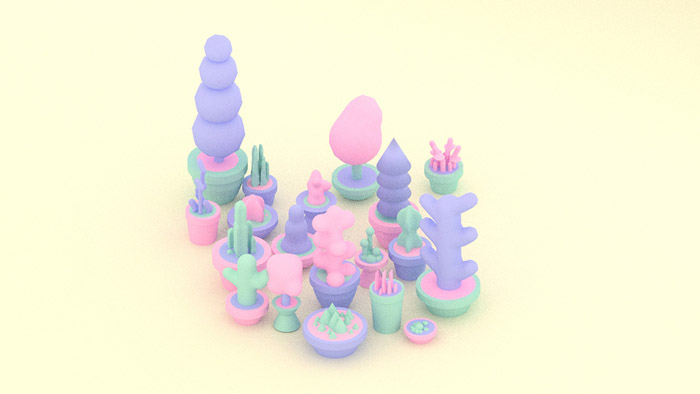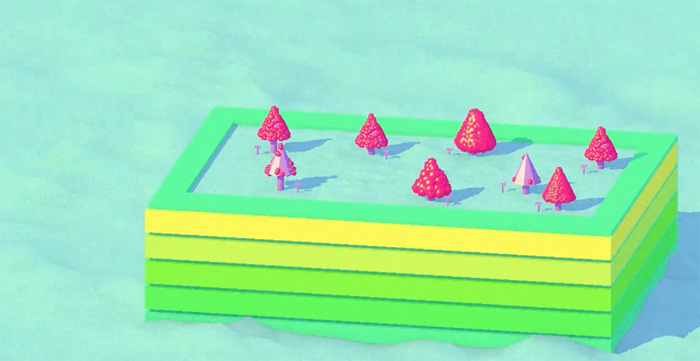Varoom 35: Tell Me a Story – Julian Glander

Nature Movie, Julian Glander
In these extracts from the Varoom 35: Storytelling article, Varoom talks to 3D animator, illustrator and “art person”, Julian Glander. Celebrated for his dazzlingly coloured humourous gifs and illustrations, he recently created a dozen intriguing time-lapse plant growth videos, created in residency at the Folly Tree Arboretum (a collection of rare and unusual trees ‘devoted to nature’s sense of humour’), that transform hypnotically as one watches.
What compels you to tell stories?
Julian Glander: Narrative is the most powerful tool an artist can use to get their audience personally invested in a work. When you’re held in suspense and curious to see where a story goes, you become totally open and let that story into your mind completely. It feels like magic. As an artist, I just really like that I get to be part of someone’s day in that way.
Which storyteller, from any medium, do you most admire and why?
JG: Miranda July, a filmmaker, artist and writer. Everything she does feels so alive and intimately personal, and she makes it work across every media you can think of.

The Wind, Julian Glander
What are the most important elements in a narrative piece?
JG: The ending. To me, narrative is a promise and fulfillment of that promise. Every narrative piece starts with a “promise” — sometimes it’s a plot goal: our heroine sets out to kill a crocodile, etc. In my work it’s more often a tonal promise — you can expect from the first frame that the piece is going to be funny, or be zen and hypnotic.
A lot of great narratives deliver on these promises directly, but just as often the best ending is one that subverts the expectations you set up. The heroine can get eaten by a crocodile. The heroine and the crocodile can become best friends. In a tonal piece, the subversion might be more of a shift in atmosphere: a serene and calm nature scene getting interrupted by a tractor running through it, for instance. But for a story to feel satisfying, the end has to be connected to the beginning in a meaningful way.

Clone Babys, Julian Glander
With new formats and new tools, how is storytelling changing?
On top of comics and short films, more and more of the work I do is non-linear: animated GIFs and games. A looping GIF is totally closed–the end and the beginning are touching each other, one frame apart and sometimes indistin- guishable. This format lends itself really well to certain narratives: circular move- ments, Sisyphean struggles, slapstick comedy. It seems limited at first but there’s quite a lot to expand on within that restriction.
A game is more open–my view of my role as a game designer is to create a world, a mood, and a set of rules. This gives players tools to make their own endings and create their own meaning.
In a sense, both of these new types of stories could go on forever, if the person ex-periencing them wants them to.
Could you tell us a little about the story- telling devices in your Folly Tree piece and what you like most about this work?
My Broom.Zone is a series of a dozen minute- long ‘time lapse’ plant growth videos, which I animated in residency at the Folly Tree Arbor- etum. They’re inspired by some of the muta- tions and bizarre tree forms that I saw there.
It’s funny you should mention that par- ticular project because I don’t think of it as a narrative piece. It’s more of a Zen toy–you can stare at these weird trees growing and zone out, and in some of them the change is imperceptible and you can’t even put your finger on the moment something “happens”.
But whenever you make something with a start and an end, narrative gets loaded into it. There’s nothing you can do to stop it, which is really cool. The storyline of growth and the cycle of rebirth is one of the oldest narratives, maybe as old as trees themselves.
The full article is available in Varoom 35: Storytelling.
Back to News Page
